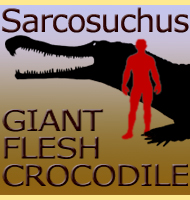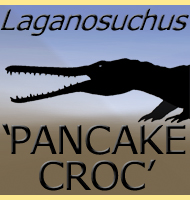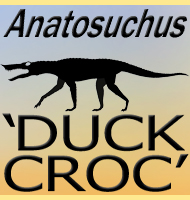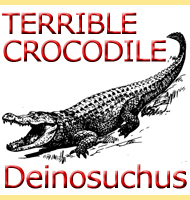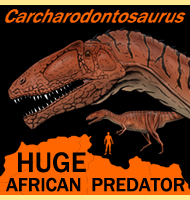


Kaprosuchus
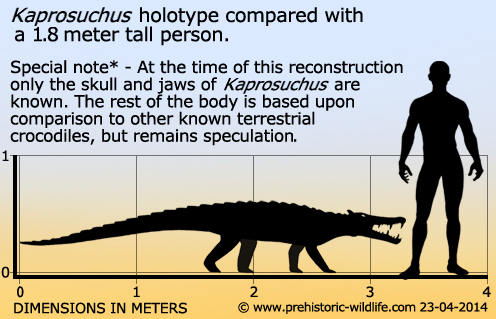
Name: Kaprosuchus
(Boar crocodile).
Phonetic: Kap-roe-soo-kuss.
Named By: Paul Sereno & Hans Larsson -
2009.
Classification: Chordata, Reptilia,
Crocodylomorpha, Mahajangasuchidae.
Species: K. saharicus (type).
Type: Carnivore.
Size: Total length of holotype skull 507 millimetres
long, length of holotype jaws 603 millimetres long. Originally
estimated at 6 meters long, later comparisons to similar crocodiles
suggest a total estimated
body length approximately 3.3 meters long.
Known locations: Africa, Niger, Echkar Formation.
Time period: Cenomanian of the Cretaceous.
Fossil representation: Single almost complete skull
and lower jaws.
After
the
release of its description, Kaprosuchus, or
'Boar Croc' as it
is more often called, quickly captured the public’s imagination and
entered popular culture soon after. The name comes from the three
sets of teeth that look like the tusks on a wild boar. These pairs of
teeth are divided two pairs to the top jaw, one pair to the lower.
The jaws also have notches in the bone to allow the teeth to pass
through. Without these notches, Kaprosuchus
would have had its jaws
permanently held open by its own teeth.
The
tip of the snout is quite
bulky and may have had a keratinous growth. Speculation for this
feature has been for a potential battering ram, where Kaprosuchus
would charge at its prey, stunning or knocking it down before
clamping down with its jaws and teeth. The eye sockets are in a
similar arrangement to other terrestrial crocodiles in that they are
angled forward as opposed to upward. There is also enough of an
angle to indicate the possibility that Kaprosuchus
had stereoscopic
vision, giving it a degree of depth perception.
Further reading
- Cretaceous crocodyliforms from the Sahara. - ZooKeys 28 (2009):
1–143. - Paul C. Sereno & Hans C. E. Larrson - 2009.
----------------------------------------------------------------------------
Random favourites
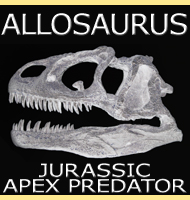 |
 |
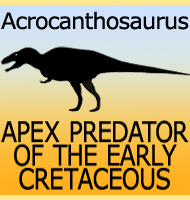
|
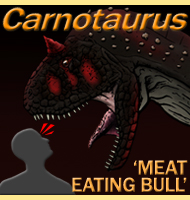 |
